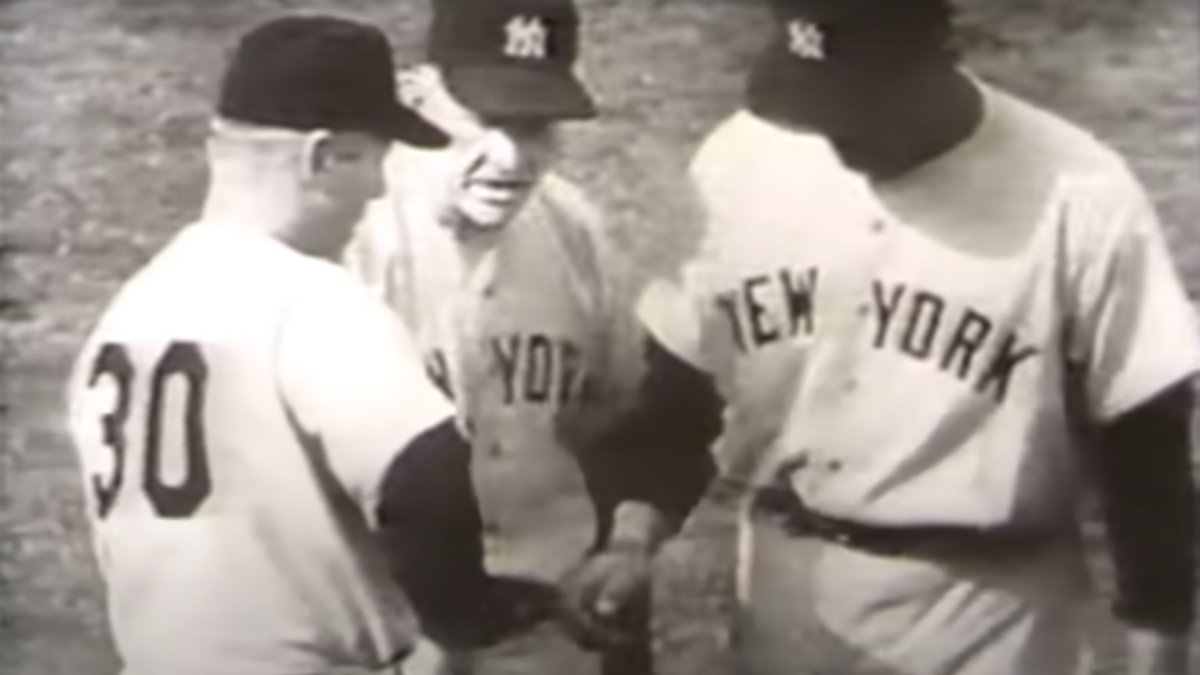Even as the first hints of spring have begun arising from the south, the sport of the “boys of summer” remains entrenched in a strife-ridden winter. Baseball owners continue prolonged negotiations with the players’ union regarding a collective bargaining agreement after the owners locked out the players last December 2. Major League Baseball already canceled its first round of spring training games, and said it would postpone Opening Day (currently scheduled for March 31) and start canceling regular-season games unless an agreement arises by Monday.
The time, therefore, seems ripe for lovers of the national pastime to rediscover Ken Burns’ documentary on the game. Titled simply “Baseball,” the original nine-part documentary was released during the fall of 1994 when a labor stoppage canceled the World Series for the first time in 90 years. Just as the miniseries helped keep alive the love of the game during baseball’s longest and most acrimonious labor dispute, by reminding the public what they most enjoyed about baseball in the first place, it can serve a similar function during the present dispute.
History and Nostalgia
Alone among major American sports, baseball stands out for its history and longevity. Baby Boomers interested in sport can credibly claim to have lived through most of the history of professional football and basketball, both of which did not come to prominence until after World War II.
Not so with baseball. While Abner Doubleday did not “invent” the game in Cooperstown, New York in 1839, baseball has approximately two centuries of history to plumb, which Burns does with adroitness.
He spends three of his nine “innings” focused on the “dead-ball” era, which ended around 1920, when Babe Ruth’s emergence as a slugger heralded a greater emphasis on power hitting and home runs. During those early episodes, Burns explores such important incidents—but incidents mostly forgotten to modern fans—as “Snodgrass’ Muff” and “Merkle’s Boner,” the latter of which led to the Chicago Cubs’ 1908 World Series triumph — their last in 108 years.
Baseball not only serves as the national pastime—it helped create our national anthem. Burns’ third episode recounts the incident at Game 1 of the 1918 World Series, where a rendition of The Star-Spangled Banner during the seventh-inning stretch proved so popular with the World War I crowd that it became a fixture for the rest of the Series. The tradition migrated to other sports, and Congress made The Star-Spangled Banner our official national anthem in 1931—a note of history lost on many of the athletes and others who now kneel during the anthem.
Working-Class Roots
Telling those early stories also reveals a side of baseball often missed by commentators who denounce modern players as millionaire prima donnas: For much of its history, baseball had a decidedly working-class flair.
The pictures of players from baseball’s first century—up until the postwar era—show hard, tough men accustomed to hard, tough labor. Honus Wagner, a member of the Baseball Hall of Fame’s inaugural class, dropped out of school at age 12 to work alongside his father in the coal mines. Little wonder that he, and many players of his era, found refuge by earning a living playing a game—but lived in fear of the injury, or slump, that could send them back to the mines from whence they came.
Far from an idyllic, pastoral scene evoked by the movie “Field of Dreams,” baseball’s rough-and-tumble players reflected the sport as a whole. For decades, baseball’s image problems came not from high ticket prices or steroid use, but associations with alcohol and hooliganism. From the “beer and whiskey league” of the late 19th century to a group of Boston Red Sox fans who caused a near-riot at the 1912 World Series, the sport faced questions from elites who considered the game less than respectable.
Anniversary of (Re-)Integration
While chronicling exploits on the diamond, Burns’ documentary also weaves two broader cultural themes into its narrative. The first surrounds a milestone soon to celebrate its 75th anniversary: Segregation in baseball, and Jackie Robinson breaking that color line on April 15, 1947.
Burns recounts that history in detail, beginning with the objections by whites, most notably 19th-century star Cap Anson, that led to the unwritten but strictly enforced rule excluding generations of black players. He does not spare the history of man’s inhumanity toward man—the N-word features in each of the original nine episodes of “Baseball,” from Anson’s willingness to sit out rather than play with black players in the 1880s, through the hate mail Hank Aaron received as he broke Babe Ruth’s career home run record in 1974.
Burns explores the Negro Leagues’ history as best he can, interviewing players such as Buck O’Neil (recently and posthumously elected to the Hall of Fame) to tell their stories from their perspective. But because most Negro League teams didn’t hire scorekeepers for most games, black players of the segregation era lost one of baseball’s defining characteristics: The ability to compare historical statistics across players, teams, and eras. Instead, legend and counterfactual “what if”s have to suffice to rank players from that era.
Labor-Management Disputes
Burns also highlights the fissures amongst players and owners that date back to the 19th century, when the sport became a business. The focus on the reserve clause — which gave teams an unlimited right to a player’s services, effectively tying a player to a team for life — seems antiquated now, nearly half a century after its extinction.
But labor strife defined much of the sport’s history. Competing leagues — the Players League in 1890, and the Federal League in 1913-15 — both illustrated player discontent and forced management to compromise, at least for a time. Notwithstanding the billions of dollars at stake, the fact that players and management cannot agree on a new collective bargaining agreement seems unsurprising given a century and a half of mistrust within baseball.
Warm Glow of History
Baseball commissioner and Yale English professor Bart Giamatti famously said that baseball is “designed to break your heart,” beginning in the spring, blossoming in the summer, but “as soon as the chill rains come, it stops, and leaves you to face the fall alone.” (Tragically, baseball broke Giamatti’s heart — in some respects, quite literally — when he died of a heart attack in 1989, weeks after banning Pete Rose from the game for gambling.)
But Ken Burns’ “Baseball” shows the other side of Giamatti’s claim. As America’s national pastime and the sport with the longest and most storied history, it provides a glow that can remain in the hearts of loyal fans through the coldest of winters, even those extended by baseball’s self-inflicted wounds.
A quote attributed to team owner and promoter Bill Veeck observers that baseball’s inherent greatness comes from the fact that the game’s owners — despite best efforts ranging from the current lockout to the socialistic monstrosity known as the designated hitter — have yet to kill it. Ken Burns’ series demonstrates why.
Ken Burns’ Baseball is available on DVD, or streaming via Amazon Prime or the PBS app.









